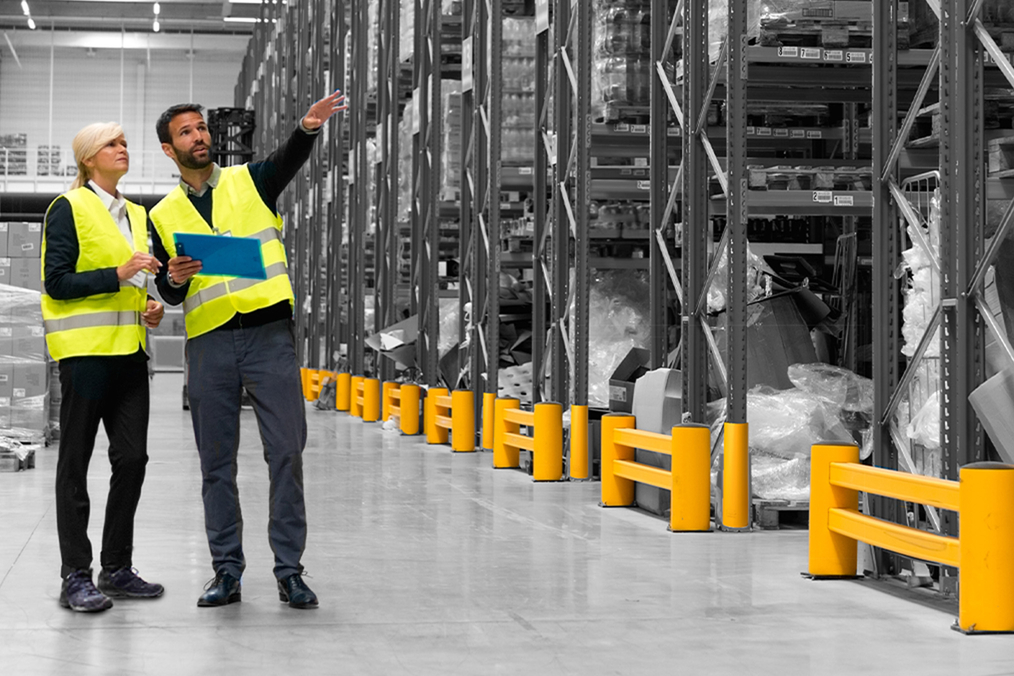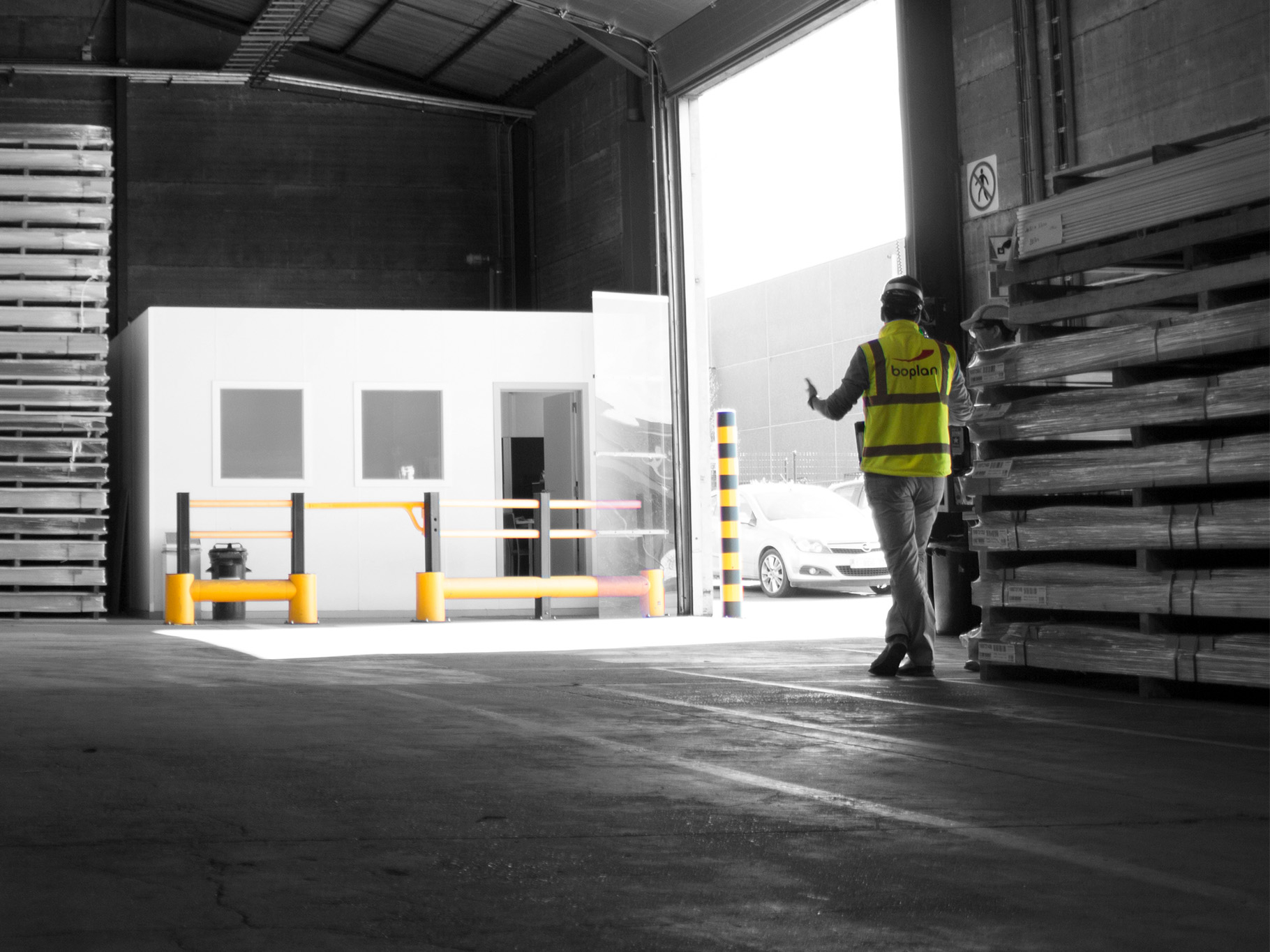Do you know the key qualities of a good safety manager?
A safety manager has a great deal of responsibility for ensuring workplace safety. They have numerous duties: Conducting risk assessments, giving safety advice, reporting accidents and illnesses, writing reports, and more. A company doesn't entrust the safety of its employees to just anyone. The knowledge and skills of a safety manager are needed to establish clear safety procedures.

The qualities of a safety manager:
Stress resilience
A safety manager must be able to handle pressure. It's important to stay calm in any situation to make the right decisions. Stress impairs thinking and leads to poor decisions. Stress should not affect their thinking and actions, because decisions made under stress can worsen the situation. We refer to this as the "cobra effect." In this situation, you attempt to fix the issue, but your approach ultimately makes things worse. Additionally, poor stress management leads to long-term issues. Someone who is constantly under pressure will, over time, develop a narrow mindset in their overall thinking and reasoning. This can result in situations where safety is the first to suffer. A safety advisor can only manage an emergency if they have their stress levels under control: "If you can't handle the pressure, step away."
Communicate openly
A good safety manager has excellent people skills. Communication plays a crucial role in workplace safety. It's not just about sharing information, policies, and precautions. The safety manager also knows how to involve and empower employees effectively.
It's not just about what they say, but more importantly, how they say it. They can enter the workplace like Sergeant Hartman from the movie Full Metal Jacket, ensuring everyone is instantly intimidated by their menacing presence. Alternatively, they can be approachable and inspire enthusiasm in people. The second approach requires much less effort to maintain a positive attitude in the workplace. By being receptive to employees' input, the message will integrate into the workplace faster and become lasting.
Moreover, people in the workplace are an invaluable source of information. Many employees have enough experience to know exactly what can go wrong in their jobs. The key is to listen carefully to their experiences and insights and to adjust precautions accordingly.
Sense of responsibility
A sense of responsibility is a positive character trait and a valuable asset. An individual with an innate sense of responsibility will always focus on the well-being of those around them. A good safety manager will radiate this quality and lead by example. Of course, you can't expect to find a sense of responsibility in others if you have a casual attitude yourself. A message delivered with enthusiasm will stay in the mind longer than one delivered in a stern manner. Click here for safety presentation hints.
Resolute and direct
In critical situations, a firm, direct approach can save lives. This also applies to the preventative approach to safety hazards. Not every safety measure will please everyone. A good safety manager is prepared for potential resistance from employees and managers. They back up their proposals with clear arguments and emphasize their importance so that everyone understands them.
Directness in communicating and implementing a safety plan is also important. The health and safety of workers are paramount, and a health and safety manager will never prioritize a deadline or a limited budget over it. An incident is their responsibility, so they need to ensure their priorities are correct.
Hands-on insight
Safety and efficiency do not exclude each other. On the contrary, a process can be considered efficient only if it is conducted under safe conditions. As a safety manager, it is advantageous to have a clear understanding of business processes. A technical background or experience in another role within the company can help, but it is not essential. The people on the shop floor have the technical expertise to assist the manager and collaborate to enhance workplace safety.
Safety also applies to forklift and pedestrian traffic both inside and outside an industrial building. Knowing where forklifts travel and the zones where they intersect with pedestrians can be planned for when installing polymer safety barriers.
Guarded pessimist
This may seem like a negative character trait, but it is actually crucial in a safety-focused role. Someone who sees danger everywhere is more likely to ensure a safe workplace than someone who accepts everything passively. In fact, a pessimist is likely better prepared for the worst-case scenario than an optimist.
There are various types of pessimism. One type is risk aversion. As the term suggests, the person is averse to any decision or situation that might involve risk. This is an attitude that can be especially useful for a safety manager. Another form is guarded pessimism. Unlike a typical pessimist, a guarded pessimist prepares for possible setbacks. Where others do not see the possibility of a negative outcome, someone with this trait may identify potential dangers and take immediate precautionary measures.
Note: Pessimism should not be overwhelming. This trait is beneficial only when it is within reason. If not, it can severely impact the efficiency of processes or, worse, have the opposite effect.
Think and work methodically
A safety manager cannot avoid working in a planned manner. Safety is a matter of planning: a traffic plan, a corporate emergency (or contingency) plan, a safety plan, a health plan, and more.
A solid plan begins with a thorough analysis. A risk analysis allows the safety manager to understand the risks. If they can clearly identify this, they can significantly increase the chances of success for the resulting transport or safety plan. This type of analysis and safety measure also ensures that the company is ready for safety inspections.
A traffic plan is particularly necessary in environments with vehicles such as forklifts and trucks. One of the main goals is to separate traffic flows. You don't want pedestrians and forklifts interfering with each other. Among other things, the traffic schedule determines where polymer safety barriers for columns are needed, where bollards or tall posts are required, and where handrails provide extra protection for workers.
Feedback from employees
Don't overlook the best source of information in your company: your employees. Not only can they assess the risk, but they often know how to turn the risk into a safety measure. For instance, they might be able to identify where polymer safety barriers are suitable in areas and aisles with forklift traffic.
Conclusion
Not everyone is fit to be a health and safety manager. In addition to a broad understanding of their field, a good safety manager exhibits the following specific personality traits: resilient under stress, but not negligent; direct, but not authoritarian; a guarded pessimist, but in a constructive way.
However, a safety manager cannot be on-site everywhere simultaneously. And even when workplace risks have been identified, an accident can still happen. That's why it's crucial to outfit a factory building with the right safety solutions. Examples include polymer safety barriers, bollards, fall protection, rack protection, safety gates, and more.
Discover which safety solutions apply to your company in our knowledge center. Got any questions? Don't hesitate to contact our experts with years of experience in safety products. They can help you pinpoint critical locations or situations to prevent damage or injury.
